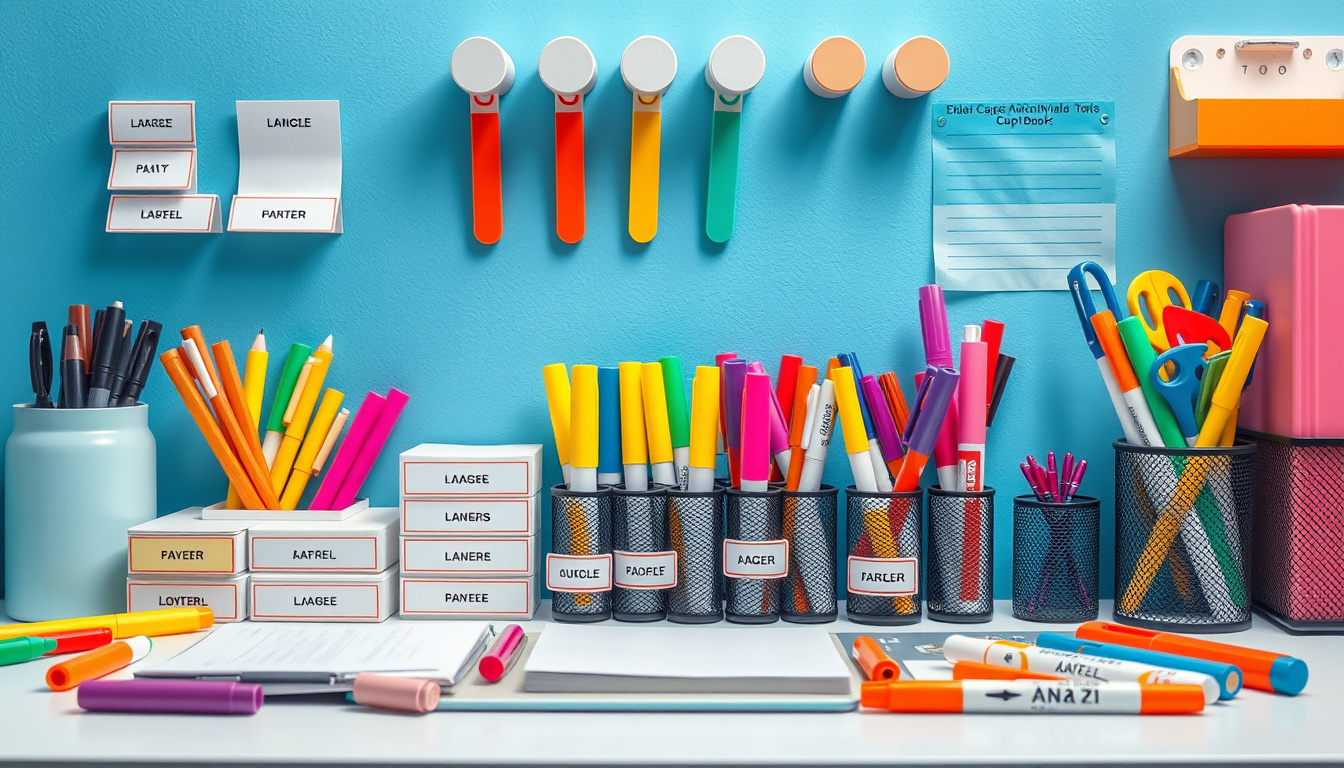In an age where organization is key to productivity and efficiency, using markers for labeling has become a preferred method among professionals, educators, and home organizers alike. Whether you’re labeling lab equipment, office supplies, or jars in your pantry, knowing the right marker and labeling techniques can make a world of difference. This guide dives into the essentials of using markers effectively for various labeling tasks, addressing common concerns, and providing practical tips to enhance your labeling game.
Why Use Markers for Labeling?
Markers offer a versatile and quick way to label items. Unlike pre-printed labels, using a marker allows for rapid customization, ensuring that you can create exactly what you need in real-time. They can be particularly useful in environments such as laboratories, classrooms, and even kitchens where information needs to be clear and concise.
Advantages of Marker Labeling
- Flexibility: Markers can be used on a wide range of surfaces, including plastic, glass, paper, and metals.
- Portability: They are easy to carry and require no special equipment other than the marker itself.
- Customization: Handwriting allows for unique labels tailored to specific needs, making it easier to differentiate items.
- Affordability: Markers are generally inexpensive and readily available compared to other labeling solutions.

Choosing the Right Marker
Choosing the right marker for your labeling needs depends on the material of the item being labeled and the intended application of the label. Here’s a summary of what to consider:
-
Surface Material: Different surfaces react differently to ink. For example, permanent markers are effective on non-porous surfaces like plastic and glass, while water-soluble inks may smudge on smooth surfaces but work well on porous items like paper.
-
Ink Type: Permanent markers like Sharpies are often favored for their durability, especially in environments where moisture or temperature might affect labels, such as laboratories where items are exposed to liquid nitrogen or other reagents.
-
Tip Size: Depending on the level of detail required or the size of the item being labeled, you might prefer a fine tip for small labels or a broader tip for larger surfaces.
Recommended Markers
- Sharpie Permanent Markers: Renowned for their reliability and versatility, they are ideal for most labeling tasks.
- Paint Markers: Useful for labeling dark or non-porous surfaces, providing vivid visibility.
- Industrial Markers: Designed for high-stress environments, these markers resist fading, moisture, and extreme temperatures.
Best Practices for Labeling
To maximize the effectiveness of your marking strategy, consider these best practices:
- Test Before Use: Try the marker on a small area of the surface first to ensure compatibility and that the ink adheres well.
- Allow Ink to Dry: After labeling, give the ink time to dry completely to avoid smudging—especially if the item will be handled frequently.
- Clarity is Key: Use clear and consistent handwriting. If necessary, consider using stencils for uniformity.
- Maintain a Catalog: For complex systems (like lab samples), maintain a registry or a digital log of your labels for easy retrieval.
- Date and Initial: Especially in laboratories, it’s good practice to include the date and your initials to track samples effectively.
Handwriting on Labels: Tips & Considerations
Can you handwriting on labels with different types of markers? Absolutely! The suitability often depends on the label’s material. For most standard white matte finishes, permanent markers work well. However, for glossy surfaces, ensure that you choose a marker designed for those materials to prevent smudging or washing away.
Marker Compatibility with Various Label Materials
- Standard White Matte: Best with permanent markers, pencils, and highlighters.
- Weatherproof Labels: Need durable markers that withstand moisture, making permanent or paint markers a great choice.
- Glossy Labels: Typically require permanent markers or specific brands that are formulated for glossy finishes.
Conclusion
Using markers for labeling not only enhances organization but also saves time and effort in managing your surroundings. By selecting the right marker and following best practices, you can achieve a labeling system that is both effective and aesthetically pleasing. Whether you are in a lab, an office, or at home, mastering the art of labeling with markers can bring clarity to chaotic environments and streamline your daily tasks. So grab your markers and start labeling—your organized future awaits!
>> Chest Freezer Reviews <<
>> Upright Freezer Reviews <<

